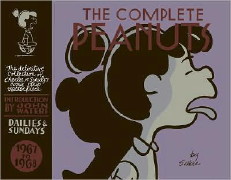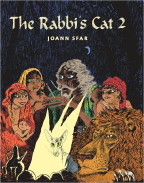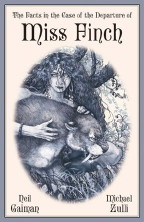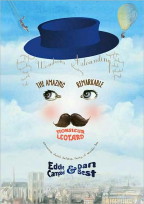Review: The Complete Peanuts, 1967 to 1968 by Charles M. Shulz

The Complete Peanuts, 1967-1968
By Charles M. Schulz; foreword by John Waters
Fantagraphics, February 2008, $28.95
By 1967, [[[Peanuts]]] wasn’t just another comic strip in the local newspaper, it was a media phenomenon. The first TV special, A Charlie Brown Christmas, had won an Emmy amid universal acclaim two years earlier, and You’re a Good Man, Charlie Brown
was about to open on Broadway. It was the epitome of mainstream entertainment – on May 24th, California Governor Ronald Reagan and the state legislature even proclaimed it “Charles Schulz Day.” The strip hadn’t quite hit its ‘70s mega-merchandising heyday, but it was getting there.
At the same time, not all that far from Schulz’s Santa Rosa home, Berkley was roiling with anti-war fervor and the Summer of Love had hit San Francisco. Peanuts had been seen as an edgy, almost countercultural strip in the early 1950s, but those days were long past, and Peanuts was the Establishment. In those days, you were with the pigs or with the longhairs, right? And where did Peanuts stand?
From the evidence here, Peanuts stood where it had always stood: on its own, only rarely commenting on specific issues of the day (such as the “bird-hippie” who would become Woodstock in another year or two), but talking around those issues in ways that most of America could laugh at… some more uncomfortably than others. Schulz was never one to declare himself on one side of an issue or the other; he’d just write and draw his cartoons, and let others make their interpretations.



 Joann Sfar, one of the major lights of the current European graphic novel scene, has written or collaborated on more than one hundred books, but probably his most famous and acclaimed work is the original [[[The Rabbi’s Cat]]], which won the prestigious Jury Prize at the Festival International de la BD d’Angouleme (Angouleme International Comics Festival).
Joann Sfar, one of the major lights of the current European graphic novel scene, has written or collaborated on more than one hundred books, but probably his most famous and acclaimed work is the original [[[The Rabbi’s Cat]]], which won the prestigious Jury Prize at the Festival International de la BD d’Angouleme (Angouleme International Comics Festival). The “Dungeon” series has gotten so full of stories, so complicated, that there’s a diagram on the back of this book to explain how all of the sub-series relate to each other.
The “Dungeon” series has gotten so full of stories, so complicated, that there’s a diagram on the back of this book to explain how all of the sub-series relate to each other. Neil Gaiman has been too busy lately to write much for comics unless it’s an event — like
Neil Gaiman has been too busy lately to write much for comics unless it’s an event — like  Manga Friday returns after a brief hiatus — I was on a secret mission in Darkest Florida, and unable to read manga and coherently think about them for several days — with a look at two very, very different books. We’ll start with the easier one to explain.
Manga Friday returns after a brief hiatus — I was on a secret mission in Darkest Florida, and unable to read manga and coherently think about them for several days — with a look at two very, very different books. We’ll start with the easier one to explain. Eddie Campbell has always done comics his way, without worrying about other people’s expectations or preferences — one of his two major series has been a fictionalization of his own life as a comics creator, and the other, a superficially more populist sequence about Greek gods in the modern world, was itself about storytelling more often than not. So it’s no surprise that his latest graphic novel — co-written with Dan Best — is more about telling its story than it is the story being told.
Eddie Campbell has always done comics his way, without worrying about other people’s expectations or preferences — one of his two major series has been a fictionalization of his own life as a comics creator, and the other, a superficially more populist sequence about Greek gods in the modern world, was itself about storytelling more often than not. So it’s no surprise that his latest graphic novel — co-written with Dan Best — is more about telling its story than it is the story being told. We’ve all occasionally wanted to go back in time — to fix something we screwed up the first time, to relive some particular time in our lives, or just to do something differently. But would we be able to do better the second time around? Alex Robinson’s new graphic novel — coming up in July from Top Shelf — asks exactly those questions.
We’ve all occasionally wanted to go back in time — to fix something we screwed up the first time, to relive some particular time in our lives, or just to do something differently. But would we be able to do better the second time around? Alex Robinson’s new graphic novel — coming up in July from Top Shelf — asks exactly those questions. Lemire is in the middle of an impressive thematically-related trilogy of stories about a rural bit of Ontario, Canada – the first book was
Lemire is in the middle of an impressive thematically-related trilogy of stories about a rural bit of Ontario, Canada – the first book was  What do women want? Sigmund Freud thought he knew, but we all know about him. After a few decades of feminism, it’s become clearer that the best way to find out what women want is… to ask them.
What do women want? Sigmund Freud thought he knew, but we all know about him. After a few decades of feminism, it’s become clearer that the best way to find out what women want is… to ask them.








